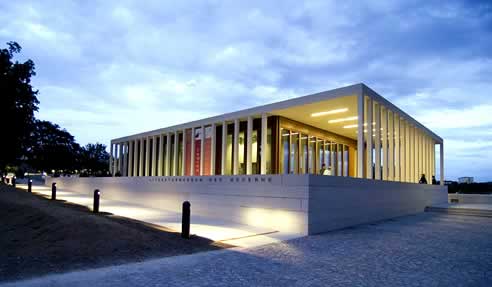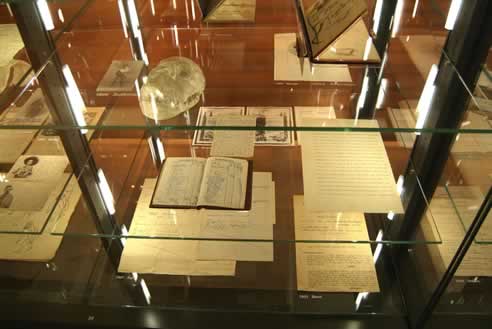NEWS ARTICLE ARCHIVESTridonicAtco's modern power LED's illuminate old literature The Literaturmuseum der Moderne (Modern Literature Museum) houses valuable exhibits from the 20th and 21st centuries. these sensitive items may only be displayed and lit under strictly defined conditions. LED light from TridonicAtco is used in the display cabinets to ensure that the exhibits are properly presented with minimal reflections and maximum protection. From the outside the Literaturmuseum der Moderne in Marbach is modest in the extreme. But inside there is an impressive exhibition space of around 1,000 m². Significant works from more than 1,200 authors and academics are presented in six different rooms. These works include manuscripts of Franz Kafka's "Der Proceß", Alfred Döblin's "Berlin Alexanderplatz", Martin Heidegger's "Sein und Zeit", handwritten poems, letters, school diplomas, historic sound recordings, clothing, death masks and private photo albums.
Light for styling The lighting concept by Mati AG, Adliswil/Switzerland, puts visitors in the right mood for viewing the exhibits right from the start. Daylight gives way to soft artificial light of reducing illuminance. An important reason for this is that the paper and ink of the fragile exhibits will tolerate a maximum of 50 lux otherwise they will bleach or discolour. The room must not exceed 55 % humidity or a constant 18°C.
High requirements The diffused room lighting adds an air excitement to the interplay between the architecture and the exhibits. Three-phase power rails from Erco are concealed between the ceiling beams. The special quality of the light and the way it is expertly directly create a unique atmosphere in this permanent exhibition. The Castor floodlights fitted with 42 W compact fluorescent lamps in light colours 830 and 840 produce a soft background light. TM spotlights fitted with 50 W low-voltage halogen lamps highlight the sensitive objects. Optec spotlights with spot reflectors, 35 W metal halide lamps in light colour 830 and electronic control gear put the less sensitive exhibits in the right light.
Light integrated in the exhibition The solution: 4 mm high LED lighting integrated in the structure of the cabinets. Their uniform distribution of light over an angle of 140° meant that the exhibits were not in shadow. The cool light makes the cabinets appear as design elements in the warmer softer light of the room. The lighting designers Cri Bertozzi and Hanspeter Keller opted for LEDs because of the recent advances made in white light quality, colour rendering and definable colour temperatures. Other benefits included low power consumption and the absence of UV and IR radiation. What's more, compared to "classic" optical waveguide systems with generators, the P106 NW powerLED strip modules from TridonicAtco with their colour temperature of 4,200 K and optimum thermal management hardly place any additional load on the climate of the room.
Technical finesse  |
 |
 |